The Fresh Prince of Polynesia
In this era, the most competitive time in the history of surfing on tour, there are three or four surfers at any given time flying the Hawaiian flag. Michel Bourez hauls the red and white Tahitian flag all by himself. Can he beat the Hawaiians?

This story was originally published in print, in the Spring 2014 issue of The Outdoor Journal, you can subscribe here.
It’s one thing to have a mountain, wave, or trail right in your back yard. But it’s another entirely to grow up at a world-class sporting venue. Picture a preschool T Rice learning to link turns at Jackson Hole, or a Sam Hill riding the hills of Western Australia with training wheels, or even 21-year old surf phenom, John John Florence getting pushed into waves at Pipe, the measuring stick by which all other surf spots are graded, which happens to be steps from his backyard.
Now imagine growing up on Tahiti, a spec of land in the middle of the ocean, formed by a series of geologically violent volcanic eruptions, and comprising of craggy cliffs lurching out of the blue South Pacific.
On this lush island is a place where massive Southern Hemisphere swells travel thousands of miles to come pulsing through a deep trench and crash with life-threatening explosions on a reef as rough as a cheese grater.
Teahupoo, as it is called, is essentially the watery playground on Tahiti where Michel Bourez grew up.

Bourez, a seven-year veteran of the ASP World Tour and considered one of the strongest surfers on the planet, not only because of his physical strength, but the force with which he surfs, has lived his entire life in Tahiti, the hub of French Polynesia.
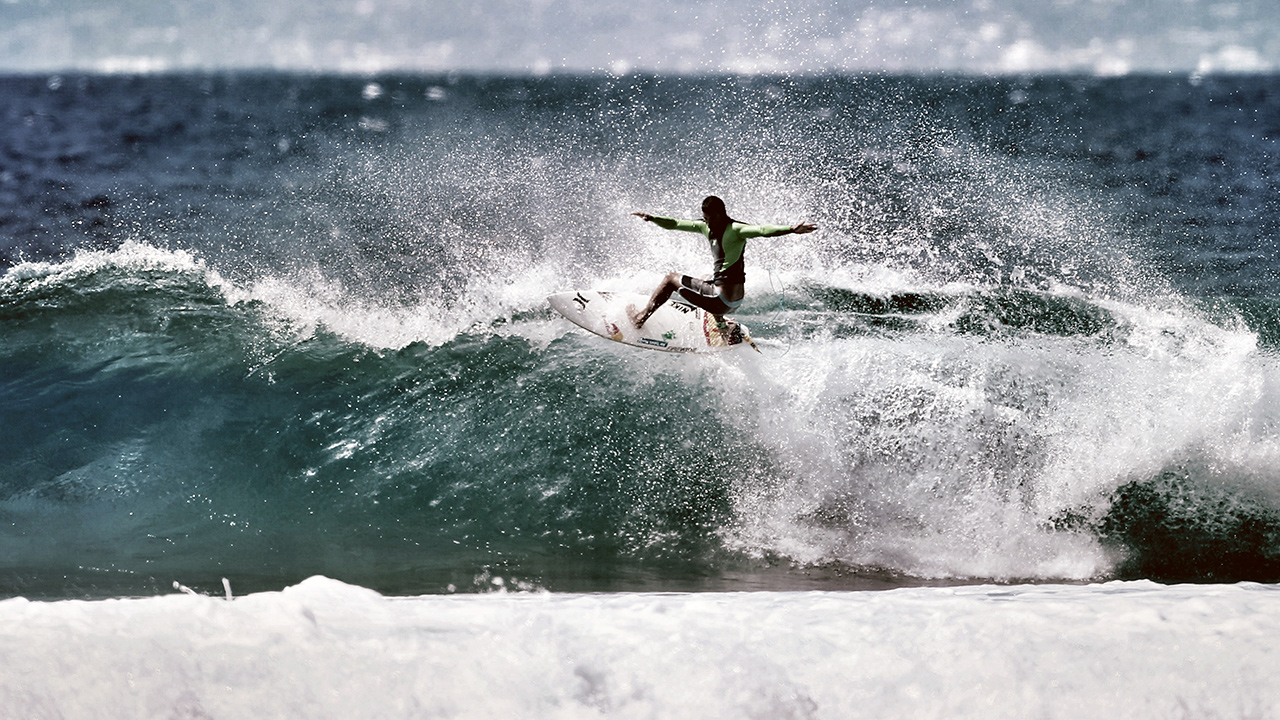
Hailing from Rurutu, his quiet pride and prowess in the water is the modern embodiment of the very Polynesians who had migrated through Tonga, Fiji and Samoa to settle Tahiti. He’s known in the surfing world as “The Spartan,” for his resemblance to the chiseled warriors of the film “300, Rise of an Empire” and for his potent carves known to decimate wave sections. His Firewire surfboards -- the most technically constructed boards on tour, shaped by Australian board building legend, Nev Hyman -- have to be reinforced to hold up through his turns.
Every family has at least someone who surfs, from the father, to brothers or cousins"
No one complains about growing up in Tahiti. Bourez’s father, a math and physics teacher, was a multi-sport athlete most accomplished as an outrigger canoe racer. An early version of the outrigger was likely the craft that the first peoples of Southeast Asia migrated to Tahiti in. It’s been an Olympic sport for nearly 100 years.
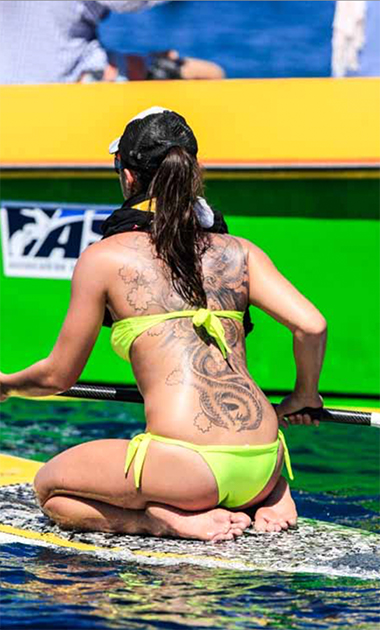
Make no mistake, Michel was a great canoe racer, but he was an all around waterman and also a talented surfer. And when it came down to it, he preferred paddling for waves to simply paddling. “My father didn’t like that decision,” remembers Bourez. “He didn’t realize there was any future in it. But once I dedicated myself and he saw the path, he supported me 100 percent.”
Surfing is a huge part of Tahitian culture. Like Hawaiians, Tahitian family days are spent at the beach.
“Every family has at least someone who surfs, from the father, to brothers or cousins. It’s just got a great vibe and brings happiness to the family,” explains Bourez. “For me, it was about the freedom. You’re in the ocean and there are so many things you can do on a wave. You’re out there with your friends and you’re using you’re entire body. And no one can tell you how to surf.”
Vetea David was the first Tahitian to make the ASP World Tour, qualifying in the late 1980s. Like Bourez, two decades later, he was known as a power surfer. Bourez was too young to have known David in his prime, but as he got older, he learned about and respected the doors David had opened.
He also has a great amount of respect for Raimana Van Bastolaer, Tahiti’s fearless ambassador to the heaviest wavemaker on the planet. At the age of 18, Raimana took him to Hawaii for the first time.
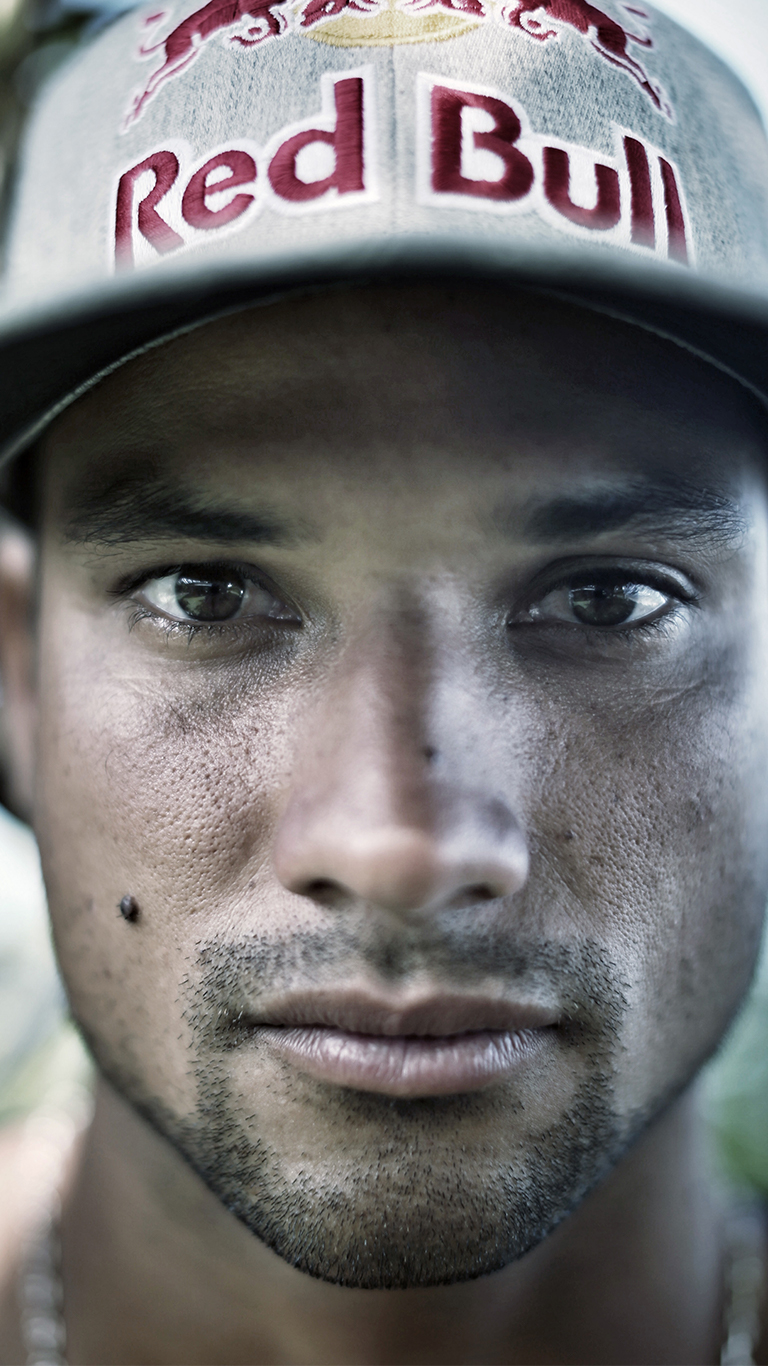
“Raimana is a Tahitian legend,” says Bourez, “We still hang, surf and talk all the time. But he was so good to me. I was so stoked to travel and he hooked me up with my first sponsors. I knew this is what I wanted to do.”
Bourez explains all this from Coolangatta, Australia where he’s preparing to surf the first event of the 2014 season. Idyllic in its own way, it’s an altered scene from the traditions of Tahiti. And the peeling, performance-oriented wave is far different from the man-eating reefs of his island home. No one has nightmares about this place like they do about Teahupoo.
For a soft-spoken kid, Bourez did not make a quiet entrance to the world stage. He earned a wildcard slot to the Quiksilver Pro France in 2007, went out, and eliminated Kelly Slater, a man who has dominated his sport more than any other athlete in history.
In 2008, Bourez was selected as one of just a handful of surfers to take part in Red Bull Rising, a training camp for young athletes featuring Australian surf coach Andy King and a “management” role that took care of the athletes’ travel needs for a year on the World Qualifying Series.
“I was really keen to do it. Andy King knows exactly what he’s talking about. And to have that structure – to not have to worry about the flight, rental car, and accommodations was huge,” Bourez said. “I was able to really focus on each event.”
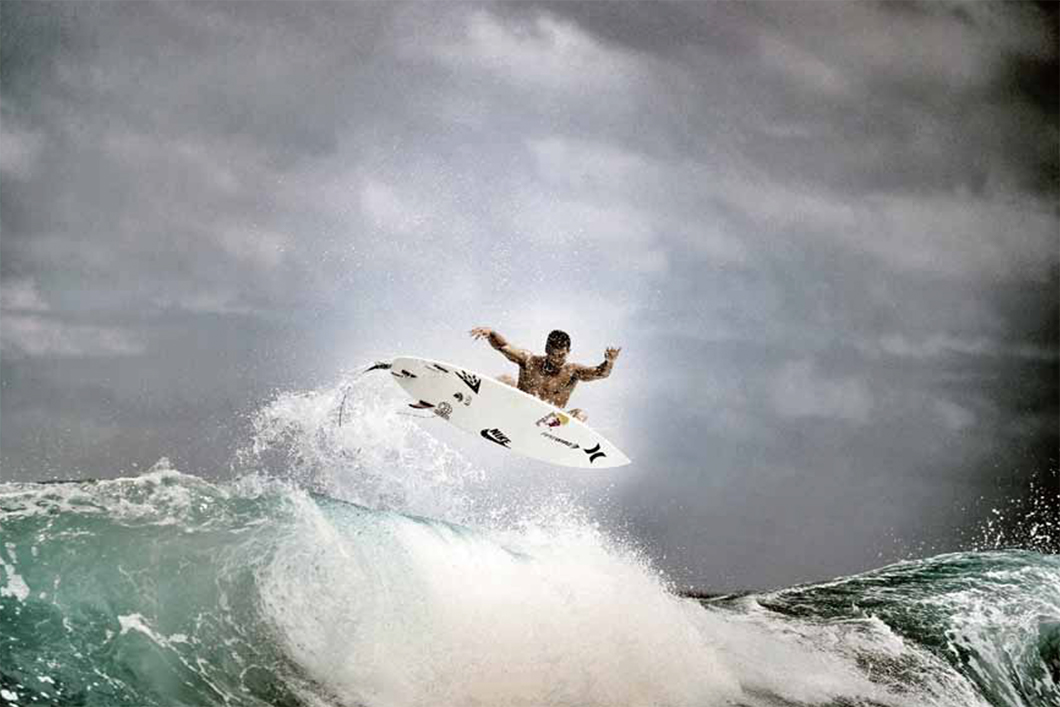
“He was so agro as a kid. He wanted so hard to be where he is now"
He was 22 and attacked the next season. He surfed consistently and in late November of that year, he won the Reef Hawaiian Pro in heavy barrels, the first jewel of the Vans Triple Crown, securing himself a coveted position on surfing’s biggest stage – the ASP World Tour.
“Michel is a self made athlete,” explains Raimana. “He was so agro as a kid. He wanted so hard to be where he is now. He had some good support around him at the right time, the right place. His family and friends, were always behind him.”
But the ASP World Tour was no joke. In fact, Bourez has hung through possibly the most competitive time in the history of surfing.
In 2011, the ASP dropped the number of elite surfers on tour from 44 to 32, making it insanely more difficult to stay onboard.
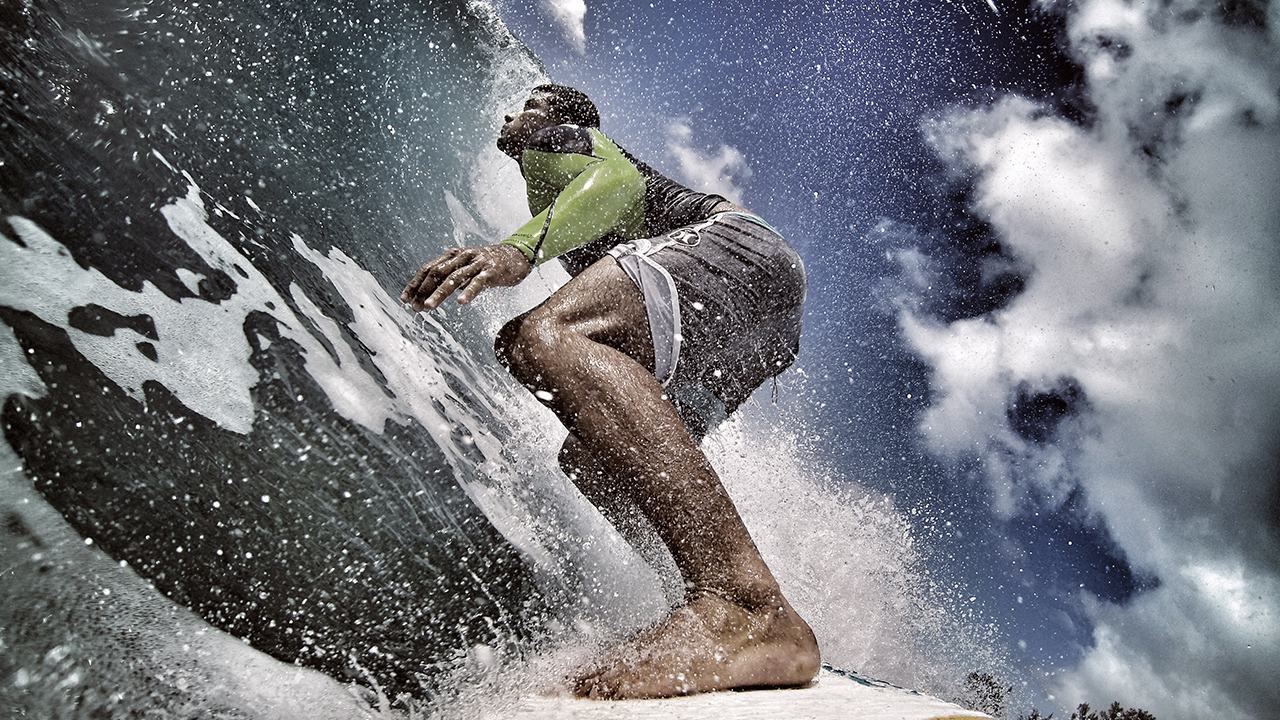
Yet Bourez still managed to make the finals of the Oakley Pro in Bali last year and win the Reef Hawaiian Pro again (not an official World Tour stop, but a Prime-rated qualifying event with the best in the world).
Then there’s a whole crop of kids who have come up behind Bourez – Australians, Californians, Brazilians, and most notably, a fellow Polynesian, John John Florence of Oahu, Hawaii.
Florence is considered by many to be a future World Champ, maybe of multiple titles. But Bourez insists there is no inner-Polynesian rivalry between he and the Hawaiians.
“When I go to Hawaii, I hang with the Hawaiians. They have the same way of life as Tahitians – pure Island style. It’s the same culture, so it makes it easy for me to do my job. I don’t have to deal with localism. I always feel welcome,” Bourez states.
And it works the other way too. “We always welcome the Hawaiians to Tahiti too. It’s a give and take.”
But on the tour, there are three or four surfers at any given time flying the Hawaiian flag. Michel is left to haul the red and white Tahitian flag all by himself. TheHawaiians include a veteran, Freddy Patacchia, 31, who has made a strong return to the forefront in the last year, 26-year-old Sebastian Zietz, of Kauai, who won the Vans Hawaiian Triple Crown in 2012 and turned heads his first year on tour, and another noted power surfer from Maui, 25-year-old Dusty Payne.
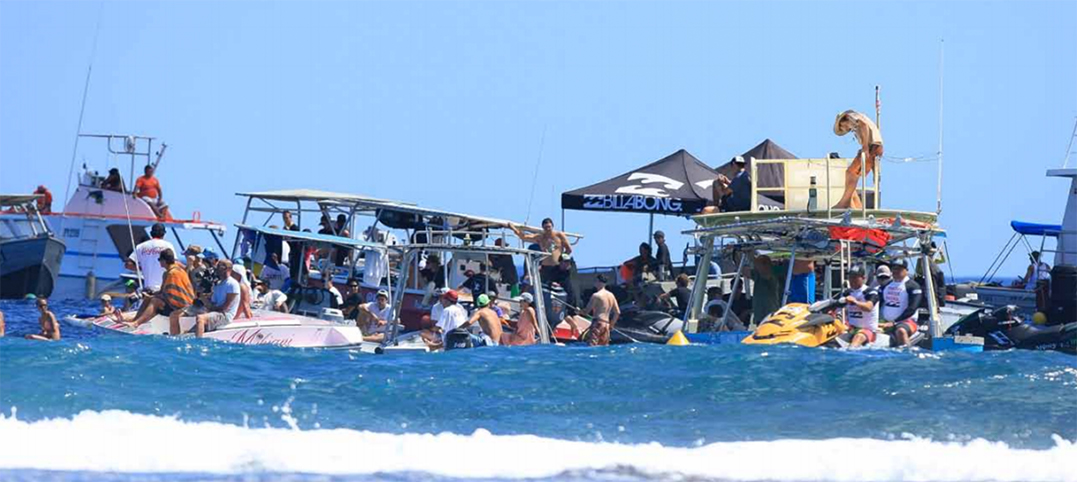
For Bourez’s part, he said, “I just do my thing. I have to just rep myself, my family, and my friends.” There’s a hint of conflict in his voice. “Of course I know I am the main face of Tahitian surfing. All I can do is my best.”
Bourez finished the 2012 ASP Tour ranked No. 15 in the world and bettered that in 2013 by finishing in the No. 12 spot in one of the most historic seasons ever.
Meanwhile, he and his longtime girlfriend, Vaimiti Laurens, have had a son. Vaimiti is an elementary school teacher and travels with him when competitions coincide with the extended breaks that Tahitians get from school every five weeks.
Bourez is truly enjoying fatherhood. “Vaimiti’s brother surfs. All of our friends and neighbors surf. We live right on the beach. Sometimes my son spends all day in the water,” Bourez says. “We just try to have fun when we’re all together, But I don’t need to push him to surf.”
Bourez did not make a quiet entrance to the world stage. he earned a wildcard slot at the Quiksilver pro France in 2007 and eliminated Kelly Slater, a man who has dominated this sport more than any other athlete in history.
At the beginning of March, the World Tour opened with the Quiksilver Pro Gold Coast in Coolangatta, Australia. This year, the ASP is a whole new game. The main governing body of professional surfing was taken over by ZoSea Media. ZoSea is an entertainment holdings company headed up by Paul Speaker, former president of Time Inc. Studios and board member at Quiksilver with Terry Hardy, Kelly Slater’s manager. The goal has been to better present surfing (a traditionally fringe sport) to a larger audience. Traditionally, the event sponsors have produced the webcast and owned the rights to their events. This year, the sponsors will simply pay to have their name on the event, but the ASP will own the media rights. ZoSea has worked out media deals with Youtube, Facebook, and ESPN. It’s a bit controversial, as surfers and fans are unsure of where the sport is going. But Bourez remains positive.
“It will be a little different for us. I’m sure there will be a few changes to the way they’re driving the ASP. But the ASP realizes where they should be and everyone feels like it’s going in the right direction.”
Backed by longtime sponsors Red Bull and Hurley, the start to Bourez’s 2014 campaign couldn’t have gone any better. He came out of the gate in average conditions at Snapper Rocks in Australia, and laid down the lethal frontside gouges he’s known for, one after another – bam, bam, bam. And he took the round one win over Owen Wright, the very talented Australian who had just returned from a devastating back injury, and California’s Kolohe Andino, son of pro surfer Dino Andino, thus raised in the very bosom of the surf world with top caliber sponsors and coaching.
In round two, he faced Patacchia, who referred to Bourez as his “island brother.” Even after throwing down multiple versions of his trademark power turn, Bourez fell short of Patacchia’s backhand attack. But it was one of the better heats of the day and signified a bright start to the season.
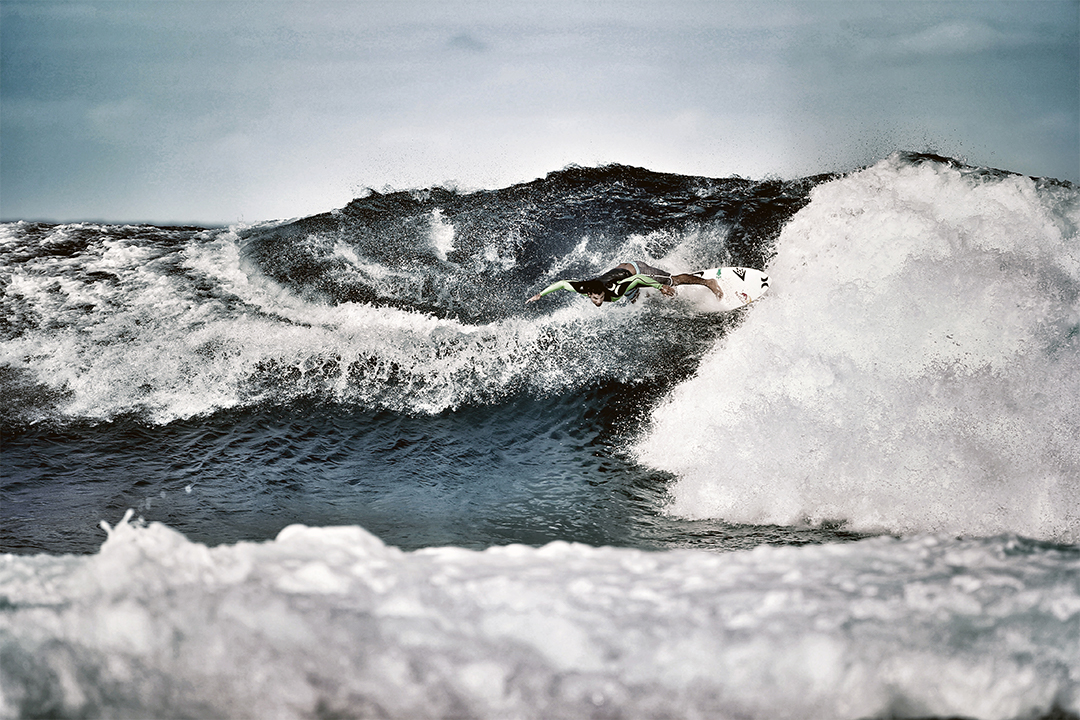
Through his career, Bourez has set attainable goals each year and achieved them, but he has yet to scalp one of those elite Tour victories. One thing that’s puzzling is the lack of a good result at Teahupoo, where he is the only surfer who gets to sleep in his own bed.
In 2011, when the swells reached superhuman size and power, he missed the quarterfinals by less than two points. He has yet to really put his mark on that event, even with the entire pro surfing world and half the population of Tahiti watching the action on everything from luxury yachts to wooden canoes. Between the wave and proximity of the crowd, it’s a very intense arena.
“Maybe the pressure of having an event in Tahiti gets to me. I know that wave better than anyone. But the vibe of the whole surf world and all the boats in the channel is so different than any other comp,” Bourez said.
There’s a whole crop of kids who have come up behind Bourez including a fellow Polynesian, John John Florence of Oahu, Hawaii. Florence is considered by many to be a future world champ, maybe of multiple titles.
Younger surfers in general seem to be at a disadvantage at some of the best waves on the planet. In the last ten years, Parkinson, Fanning and Slater have won a combined 51 tour events and every single title. Fanning and Parko are both 32 years old. Slater is a full decade older. As good as the young bucks surf, statistics show that the surfers who have competed at these waves for ten or fifteen years understand the intricacies involved in getting the best scoring waves.
Before the Tour morphed in the last five years, surfers had more time to go to a venue and develop intimate knowledge of the wave and skill. Slater knows Cloudbreak like a lover. Fanning made it his life mission to rip Teahupoo. Bourez would like to go learn other waves as he gets into his 30s.
Then there’s the fact even being the most powerful surfer in the world isn’t quite enough. John John Florence has a power game similar to Bourez but is also one of the best barrel riders with a complete aerial repertoire.
“The only thing is missing with Michel is his air skills. Once his has this, he will dominate the tour, no questions,” said Raimana.
The real factor going for him is that determination, the focus, just like his tattooed Tahitian warrior ancestors. That’s something “The Spartan” already possesses.
“He surfs or works for himself and his family first and foremost. The only pressure he has, he puts on himself. He doesn’t need to prove anything to us Tahitians, French, or foreigners,” explains Raimana. “We’ll always back him up no matter what. We love the person, the surfer he is. Whoever is supporting him will be blessed by his work. We love Michel.”





Comments ()